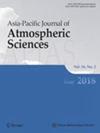摘要
对流边界层高度(CBLH)是边界层气候学的一个重要参数,它与湍流混合强度有关。2008年“中日气象灾害合作中心”(JICA)在葛泽(32.17°N, 84) 3个密集观测期的探空数据。为此,利用1983-2022年的ERA5资料,研究了青藏高原不同季风季节边界层高度(08:00 ~ 20:00)的时空变化及其影响因子的贡献。结果表明,在3个观测期内,探空资料得到的CBLH变化特征与ERA5基本一致。月平均cbh在CBL完全发育期间(14:00-18:00)东部地区仅出现一个峰值,西部地区出现两个峰值。在季风期,青藏高原上的CBLH呈下降趋势,而在季风后,东部地区的CBLH呈上升趋势。非季风期10 m高度风速是影响CBLH的关键因素,而季风期地表感热通量对CBLH的变化影响较大。Convective boundary layer height (CBLH) is an essential parameter of the boundary layer climatology, which is associated with the intensity of turbulence mixing. Radiosonde data derived from the "Sino-Japanese Center for Cooperation on Meteorological Disasters" (JICA) during three intensive observation periods in 2008 in Gerze (32.17°N, 84.03°E) were used to verify the applicability of ERA5 reanalysis data in the Tibetan Plateau (TP). Thus, the spatiotemporal variations in the CBLH (boundary layer height from 08:00 to 20:00) and the contributions of the influencing factors during different monsoon seasons in various regions of the TP were investigated using the ERA5 data (1983–2022). The results indicate that variable characteristics in the CBLH derived from radiosonde data are basically consistent with that from ERA5 during the three observation periods. The monthly-averaged CBLH showed only one peak in the eastern region during the full development of the CBL (14:00–18:00), while two peaks were shown in the western region. The CBLH over the TP exhibited a decreasing trend during the monsoon period while the CBLH in the eastern region showed an increasing trend during the post-monsoon period. Wind speed at 10 m height was a key factor influencing the CBLH during the non-monsoon period, while surface sensible heat flux considerably influenced variations in the CBLH during the monsoon period.

 求助内容:
求助内容: 应助结果提醒方式:
应助结果提醒方式:


